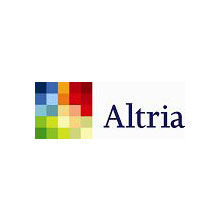Oilheat Benefits
Today's Oilheat is providing cleaner, greener, and more efficient warmth than ever before.
Clean:
- Today's Oilheat burns 95% cleaner than in 1970. Since it burns so cleanly, it comes well within the air pollution standards set by the Environmental Protection Agency. Low-sulfur products and renewable biofuels reduce Oilheat's already near-zero emissions even further.
- Residential heating oil equipment creates such a negligible amount of emissions that heating oil is not even regulated by the Federal Clean Air Act.
- All across the state, the heating oil being delivered to homes is often Bioheat® fuel - a Low-Sulfur or Ultra-Low-Sulfur product blended with renewable biofuels.
- Ultra-Low Sulfur Heating Oil reduces sulfur emissions by 99% from traditional heating oil.
Bioheat® Fuel
- Bioheat® fuel blended with biodegradable, organic materials such as soybean oil, provides the same satisfying heat, at approximately the same cost.
- Bioheat® fuel can be used in your current heating equipment, and may even make it work more efficiently.
- Most Bioheat® fuels are blends of 2% - 5% renewable biodiesel (B2 or B5 Bioheat® fuel). New research confirms that Bioheat® fuel blends of up to 20% (B20) can be used in heating equipment without any changes in the heating equipment, and is now under review by the ASTM and equipment manufacturers.
- Bioheat® fuel is made domestically from agricultural or recycled resources, reducing America's dependence on foreign oil and creating jobs here at home.
- Biodiesel and Bioheat® fuel create thousands of U.S. jobs throughout the entire production and distribution chain.
Efficient
- New Oilheat systems now boast efficiency ratings of up to 95% which provide more warmth with less fuel.
- When upgrading your equipment, look for the ENERGY STAR® rating - which is granted only to products which have met strict energy efficiency guidelines.
- Oilheat equipment is constantly evolving to incorporate advancements in efficiency and comfort. Many new boilers are designed to incorporate weather-responsive controls that greatly reduce fuel usage during mildly cold weather and provide a more even heat with fewer temperature swings.
- Wifi-enabled smart controls not only enable you to adjust settings with smart phones or computers, but also "learn" your usage habits to fully automate your comfort.
- Other important advancements include two-stage burners that conserve fuel and electronically commutated furnace blowers that save electricity, provide smoother operation and work well with high-efficiency central air conditioning systems.
Safe
- Oilheat will not burn in a liquid state. In order to light heating oil on fire, you must heat it above 140 degrees, the temperature at which it begins to vaporize.
- With home heating oil systems, carbon monoxide leaks rarely happen without warning. If an Oilheat system should malfunction, it will release smoke or soot as a visible warning; these serve as early indicators that something is wrong, long before dangerous levels of carbon monoxide can be released into the air.
- Heating oil is not explosive in its liquid form.
Storage Tanks
- Having an oil tank on your property puts you in control of your comfort. The storage tank allows you to have an adequate supply of heating oil ready for immediate use with the arrival of cold weather.
- There are two kinds of residential oil storage tanks. An aboveground storage tank may be located outside of a house, or it may be in a basement or garage. An underground storage tank is buried beneath the ground.
- Advances in technology have resulted in the manufacture of tanks made from corrosion resistant materials such as fiberglass and protected steel. Properly installed and maintained, today's oil tanks can last for decades.
- In the rare case of a leak, the Virginia DEQ has stated, "often these heating oil tanks do not impact a receptor (e.g. drinking water well or stream) and have a minimal impact on the environment."1
Virginia Petroleum Storage Tank Fund (VPSTF)
Virginia provides additional protection for homeowners and businesses in the rare case of a petroleum release from a tank. The Virginia Petroleum Storage Tank Fund (VPSTF) is a state legislated reimbursement fund from which you may recover the costs of cleaning up an oil leak.
In the unlikely event of a petroleum release from a tank, you are protected from high remediation costs. As the homeowner, your financial responsibility requirement is only $500.2 The fund covers all pre-approved, eligible cleanup costs above your deductible to $1,000,000. Your local Oilheat dealer may include payment of this deductible as part of their service or tank maintenance contracts. (Ask your dealer for an explanation of their company's policies.) Tank removal may be covered if included as part of the approved Corrective Action Plan. Revenues for the fund come from a state fee of one-fifth of one cent per gallon on heating oil and other regulated petroleum products. The fees collected are used primarily for reimbursement of costs incurred in cleaning up a petroleum release from commercial or residential storage tanks. (For more information on storage tanks and the VPSTF, ask you local full service Oilheat dealer for a hard copy of the "The Virginia Guide to Heating Oil Storage Tank." Or download our electronic version on the right.)
For further information, please contact [email protected]
1http://www.deq.virginia.gov/Programs/LandProtectionRevitalization/PetroleumProgram/CleanupActivities/HomeHeatingOilTanks.aspx
2 The corrective action financial responsibility requirement is $500 for USTs and ASTs used for storing heating oil for consumption on the premises where the tank is located (i.e., the oil is not offered for sale).
This page is brought to you in part by the National Oilheat Research Alliance.

|









